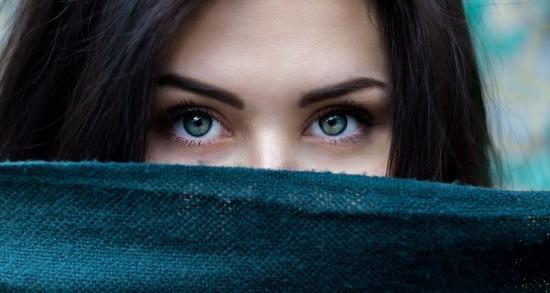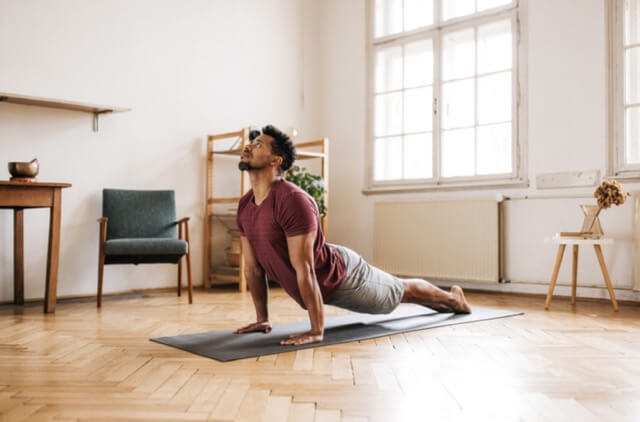Author: Randeep Singh / go to all articles on Yoga cure
Yoga for eyes:
Eyes are the windows to the external world. Sight is one of the five senses, indriyas as per Samkhya literature, through which the mind knows the world beyond the body, knowledge of arrangement of the elements in space around us is important, as the body exists in three dimensions, and has the ability to change its position by making movements of the limbs.
Yoga for eyes help fine tune this ability to sense one’s surroundings in the right perspective.
Sight is considered as the most important of all the other four senses taken together, because sight can furnish multidimensional aspects – color, shape, depth, distance , and relative positioning of different elements – of the world around us when the other senses are capable of furnishing only one aspect , touch, smell, sound, or taste – of the external environment.
The instrument of sigh in humans is the eye. Humans have bipolar vision because their mind perceives the external object by receiving the sight signals from two eyes located on each side of the nasal bridge on the face.
The eye is a semi spherical ball of cartilage which is hollow from inside. Like many other scientific inventions the digital camera is based on the structure and functioning of one of the nature’s creations, the eye. The hollow space within eye ball is filled with a clear jelly like substance known as vitreous.
The receptor of the image formed of light and the point of entry of light into the eye ball are located exactly opposite to each other . The receptor of the image section is the inside surface of the back of the eye called the retina. The retina is made up of small light sensitive cells called photo receptors.
It is similar to the image sensor inside the digital camera. The final image is formed on this receptor which is then converted into photo electrical signals and transmitted to the visual cortex in the brain through the optic nerve. The vision centers in the brain read, interpret these signals and forms the image which is understandable by the mind.
In order to reach the receptor side of the eye ball the light reflected from the object needs to first enter the eye ball, for this the eyeball has a small aperture located right opposite to the receptor called the pupil. The pupil can change its size to alter the amount of light that can enter the eyeball.
The pupil is actually the center of the colored circle like appearance on the outside of the eye ball known as the iris. The color of the eye depends on the color of the iris, a circular surrounding around the pupil. The iris is perfectly covered by a perfectly rim to rim fitting inverted sauce pan shaped transparent structure called the cornea.
The cornea holds aqueous humor, a clear liquid, between itself and the iris. The aqueous humor keeps the pressure inside the cornea constant. Cornea can be seen as the transparent round surface rising above the surface of the eye when looked at from the side. The cornea focuses the light, which reaches it after being reflected from the object, and then directs it into the pupil located in the center of the iris.
The light then passes through the pupil , which adjust the size of its aperture depending upon the amount of light being received onto the lens located behind it. The lens finally focuses the light on the receptor, the retina to be transmitted to the brain for reading it.
One of the miracles of nature exists in the lens that it can adjust its shape, from concave to convex, depending whether the light is coming from a nearby or a faraway object to form the sharpest possible image on the retina. The visible white part of the eye is called sclera, and conjunctiva is the membranous covering of the front surface of the eye.
A number of disorders can afflict the normal functioning of the eye: Astigmatism, long or short sightedness, presbyopia, flashes and floaters, dry eye, and conjunctivitis.

Yoga for eyes, how eye exercises work?
Palming as a technique of yoga for eyes relaxes the muscles of a tired eye as the warmth from the rubbed palms seeps into the muscles around the eyes. The sensitive surface of these energy deprived muscles is quick to absorb the energy offered in the form of the warmth of the palms.
Eye rotations, a must inclusion in the eye exercises regime, balance out the unevenly strained muscles of the eyes as no other exercise can do. All the yoga exercises for eye strain improve one’s concentration, reduce the instances of dry eye, and keep the mind calm and free of any diseases.
Eye strain is the common problem with the computer peeping generation of today. Yoga asana for healthy eyes rectifies the conditions like blurry eyes, dry eyes and pain in the eyes due to over straining.
Yoga asanas for healthy eyes include inversions where the body is put in an inverted position with respect to gravity, this reverses the flow of blood towards the head as the gradient of flow is turned in the opposite direction in an head low inverted position.
The heart which earlier had to, in the upright position, make effort against gravity to pump the blood to the organs which are located above its level can relax in an inverted posture as the blood is pulled into the head, and the organs placed inside it, aided by gravity.
Sometimes the benefits of yoga for eyes come indirectly as practicing yoga regularly improves the strength of the immune system which indirectly prevents eye infections like conjunctivitis from infected the eyes.
Yoga for eyes to remove glasses works by restoring the natural spherical shape of the eye ball and by correcting the deformities of the eye lens; this improves the conditions like myopia and hyper myopia.
A flush of nutrition – vitamins and plant nutrients – rich blood to the eyes which results from practicing yoga for eyes helps by preventing the formation of any solid, semi solid obstructions in the vitreous ( clear jelly in which fills the eye ball), and the aqueous humor so that light can pass uninterrupted through them to form a clear image of the object on the retina behind the eye.
Eye Exercises to Improve Vision
More interesting articles….

